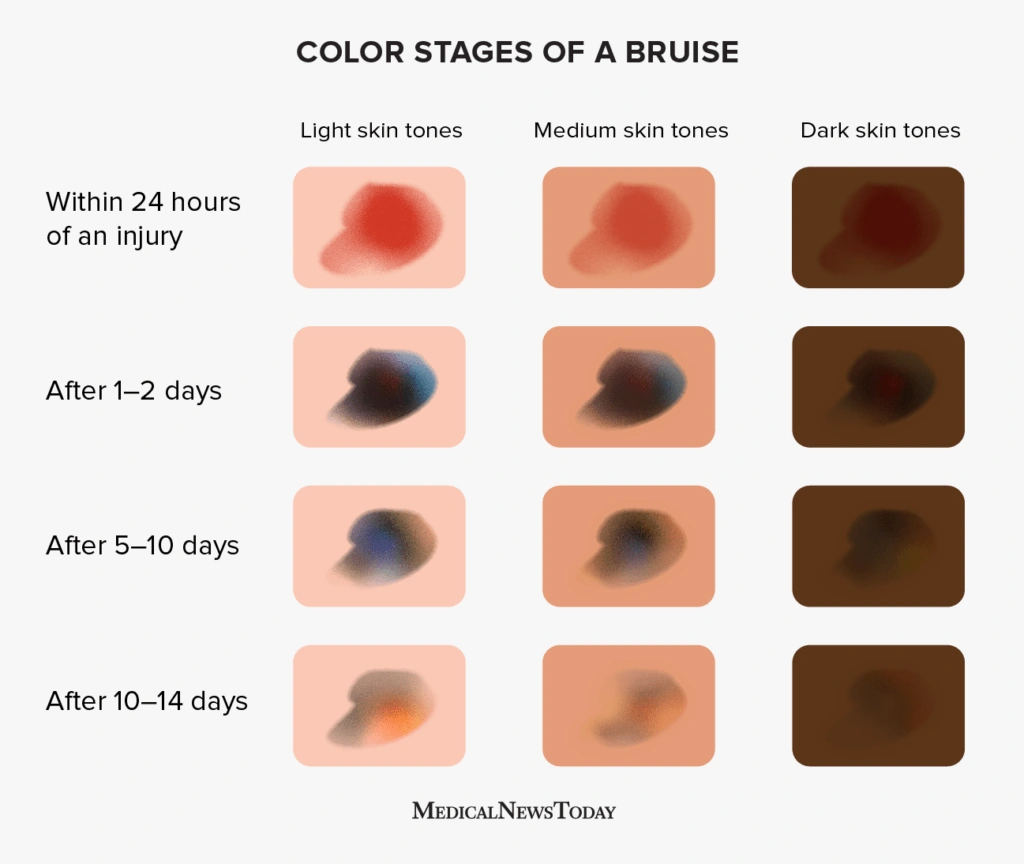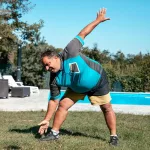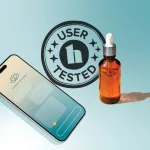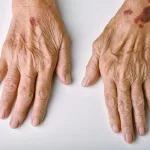
Why Do Bruises Seem Scarier Now?
Okay, let’s be real—bruises used to be something you’d get after stubbing your big toe or swinging a little too hard at the backyard barbecue. You’d show it off, maybe whine a bit, and then forget about it. But now that the skin isn’t quite as tough and the blood doesn’t behave like it used to…these little spots can make you pause. Ever had a bruise pop up and think—huh, where did that come from?
If this sounds like you, trust me—you’re not alone. In fact, nearly 90% of bruises in folks over 65 appear on their arms or legs, and most of us can’t remember how half of them got there. (I mean, is there a “bruise fairy” visiting at night? Wouldn’t be the weirdest thing happening these days, right?)
I got the “bruise surprise” myself after reaching for a can of soup perched way too high in the pantry. Arm tapped the shelf—no big deal. Next day? A whopper of a purple mark. I wasn’t even sure it hurt. Which…got me thinking: how do we tell which bruises are harmless and which need a second look?
Colors & What They’re Actually Telling You
Here’s where most of us get tripped up. There’s this idea that you can “read” a bruise like a little mood ring: purple is fresh and angry, yellow is mellow and healing. You’ve heard this, right? Let’s peel that onion (ow, now I’m thinking about bruised onions—stay focused, friend).
Seniors’ skin is thinner and our blood vessels have seen many stormy days—so a tiny bump can lead to a wild splash of color. First thing to know? The bruise identifying chart for seniors looks similar to the general public…but, the timeline can be a bit wild. Sometimes colors don’t show up in order, and that’s…totally normal.
So, What’s Underneath That Color?
Imagine a bruise timeline like a messy paint palette:
| Days Since Injury | Typical Colors | Quick Take |
|---|---|---|
| 0–2 | Red, Purple | Fresh—blood pooling near surface |
| 3–5 | Blue, Black | Getting deeper as blood loses oxygen |
| 6–10 | Green, Yellow | Body’s recycling… breaking down hemoglobin |
| 11+ | Brown, Fading | Final act—healing, color vanishing |
I’ll stop you there—before you whip out your detective hat and start “dating” every bruise in the mirror, here’s the twist: studies now say color isn’t a perfect age-stamp. Sometimes bruises skip colors or heal out of order, especially if you’re taking meds like blood thinners, or your skin’s just seen a lot of sun. According to Age of bruise based on color, yellow patches usually mean a bruise has been around at least 18 hours—and, fun fact, bruises may turn yellow even faster for seniors compared to those whippersnappers. It’s your body’s way of showing its “fast-tracked” repair process.
Personal Pause for Story Time
My neighbor, Edna (81, sharp as a tack), fell in her tomato patch and got a doozy of a purple bruise on her calf. Next morning? Yellow, already. She swore it was “ancient.” Nope—her aging skin just skips straight to the gold sometimes. We laughed about it for days. But it did make me wonder—how do we know when to worry…?
Location, Location…Ouch?
Let’s play detective, but without the stress. Not all bruises are created equal—ask any klutz with mystery marks on their shins (guilty). But, where that bruise shows up can clue you in fast if it’s just a harmless reminder or something to flag for your doc.
Common (and Not-So-Common) Spots
Most accidental bruises in older adults (nearly 90%) show up on the arms and legs—usually from brushing into furniture, pet tails, or, honestly, just living life. These are “normal” spots to get banged up as we move around the world (I once clocked my hip on the counter for the umpteenth time—seriously, why are counters always in the way?).
Let’s Compare: Accidental vs. Suspicious
| Accidental Bruises | Potential Red Flags | |
|---|---|---|
| Location | Extremities (arms, legs) | Face, neck, back, torso, buttocks, ears, genitals, soles |
| Size | Often under 2 inches | Larger than 2 inches (especially unexplained) |
| Memory | Usually recalled (“oh, bumped the table!”) | Not remembered, or story doesn’t add up |
Research on patterns of elder bruises found accidental ones are rarely seen on the trunk, back, or face (findings on elderly bruise locations). Large or strange-patterned bruises, and ones you or a loved one can’t explain, may deserve a chat with the doctor. (Better safe than sorry… and hey, gives you a great opening line for your next check-up.)
Busting Bruise Myths
“That bruise is purple, so it must be new!” Ever found yourself reciting this at the breakfast table?
Science has complicated this old-school mind trick. Turns out, the timeline of bruise colors is more spaghetti than straight arrow—especially in older skin. Some folks even develop green or yellow spots early on, while others skip right to brown. Researchers looked at photos of real-life bruises and realized: even the best docs can’t always age bruises by color alone. Go figure—your body’s just doing its own thing.
Want to go deeper? Check out the analysis at Age of bruises forensic for a behind-the-scenes peek at how the pros tackle tricky bruises (sometimes with fancy tech and forensic magic, not just eye-balling it).
Tricks for Tracking Your Own Bruises
Now, if you’re a note-taker (or just like winning arguments with your kids), whip out a notebook and map those bruises. Note the spot (“left knee, classic coffee-table collision”), the size, color, and when you noticed it. Tracking can help spot patterns—or just remind you how far you’ve come in your yoga routine (floor poses: dangerous business!).
A Word on Lighting
Lighting changes everything—what looks dark purple in your cozy living room may look yellow under the bathroom’s fluorescent glare. I once thought I had two different bruises on my arm—nope, just one shape-shifting patch playing tricks in different light. If ever in doubt, snap a picture in natural daylight and use your bruise identifying chart for seniors (above) as a guide. If things look really odd, share the photos with your doctor for clarity.
Everyday Ways to Shrink the Bruise Scare
Alright, let’s chat about some prevention (because let’s be honest, bruises are not the badges of honor they once felt like). Seniors are more prone to bumps and bruises—thinner skin, sure, but medications (especially blood thinners), and less padding beneath the surface all up the ante.
Simple Moves to Out-Bruise the Bruises
- Keep your living spaces clutter-free—cords and shoes love to trip us up.
- Wear long sleeves or pants when you’re gardening, woodworking, or channeling your inner “DIY home fixer.”
- Talk to your doctor about any suspicious bruising, especially if you notice new patterns after starting a new medication.
- Try some balance exercises—even a daily walk can keep your body awake and your feet under you.
I’ll be honest—my grandma swore by arnica gel, and after her trip-and-tumble in the vegetable patch, it seemed to fade her bruise quicker than usual. Whether it was the gel or her homemade chicken soup, who knows…sometimes, it’s the care (and a dash of placebo) that does the trick. Don’t forget, a cold pack in the first 48 hours can also help.
When Is It Time to Call the Doctor?
Here’s a quick gut-check. If a bruise is growing, super painful, or you can’t recall any reason for it—get it checked. Same if you notice bruises in odd spots (the back, face, or places you know you didn’t bump). Also, if you’re on blood thinners, err on the safe side and keep your healthcare folks in the know. For more forensic insights (and to see what sets off red flags for the pros), have a glance at Age of bruises forensic.
Let’s Wrap It Up—With a Little Less Worry
Look, friend—we might not be able to avoid every mystery bruise (unless we bubble-wrap the house, and…that’s not stylish, right?). But, knowing your way around a bruise identifying chart for seniors means you can spot what’s just a badge of living life fully and what deserves a closer look. Here’s what we chatted about:
- Colors don’t follow strict rules: yellow may show up faster in seniors, and not all bruises turn every color in the chart.
- Location matters: shins and forearms—usually fine. Back, face, or big bruises with no memory—ask a doc.
- Myths, busted: even docs get tricked by color changes. There’s fancy forensic science…but your own notes and awareness go a long way.
- Prevention and care can shrink both the bruises and the worry. Seriously, one small change (or a better lighting setup!) can make a huge difference.
So, next time you spot a new mark, instead of spinning into worry, grab a pen, jot it down. Keep your space safe, stay active, and—most of all—give yourself a break. And hey, if all else fails, show off that bruise…it just means you’re still in the game. What step are you taking today to feel in charge of your body? Go ahead—try it, and let me know. We’re in this together.


















Leave a Reply
You must be logged in to post a comment.